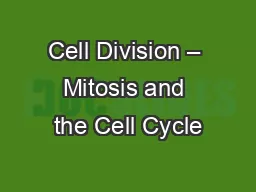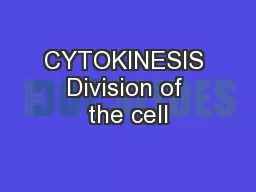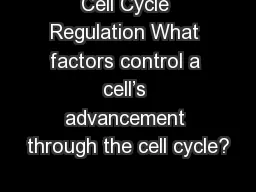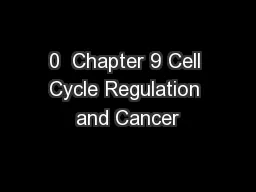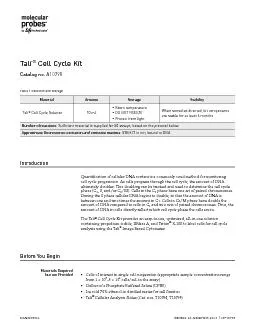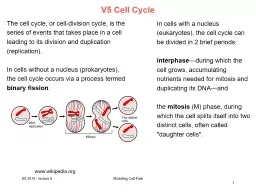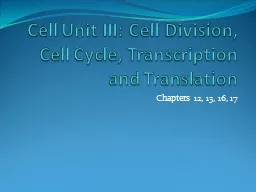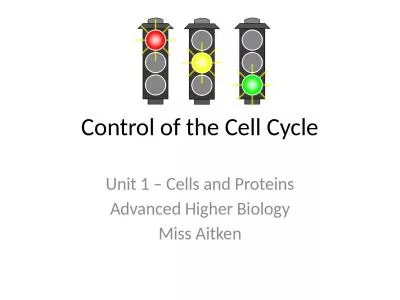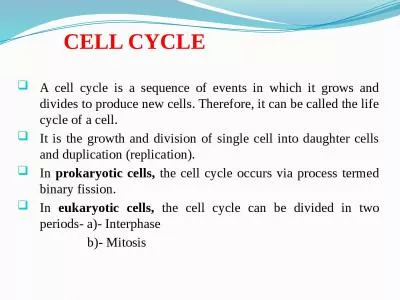PPT-The Cell Cycle 2015-2016
Author : jaena | Published Date : 2022-04-06
Ms McCabe Do Now Cells Quiz 20 Points Skipping lines number 110 Name Date Period The title is Cell Quiz Answer 15 in complete sentences For 610 write the word
Presentation Embed Code
Download Presentation
Download Presentation The PPT/PDF document "The Cell Cycle 2015-2016" is the property of its rightful owner. Permission is granted to download and print the materials on this website for personal, non-commercial use only, and to display it on your personal computer provided you do not modify the materials and that you retain all copyright notices contained in the materials. By downloading content from our website, you accept the terms of this agreement.
The Cell Cycle 2015-2016: Transcript
Download Rules Of Document
"The Cell Cycle 2015-2016"The content belongs to its owner. You may download and print it for personal use, without modification, and keep all copyright notices. By downloading, you agree to these terms.
Related Documents



